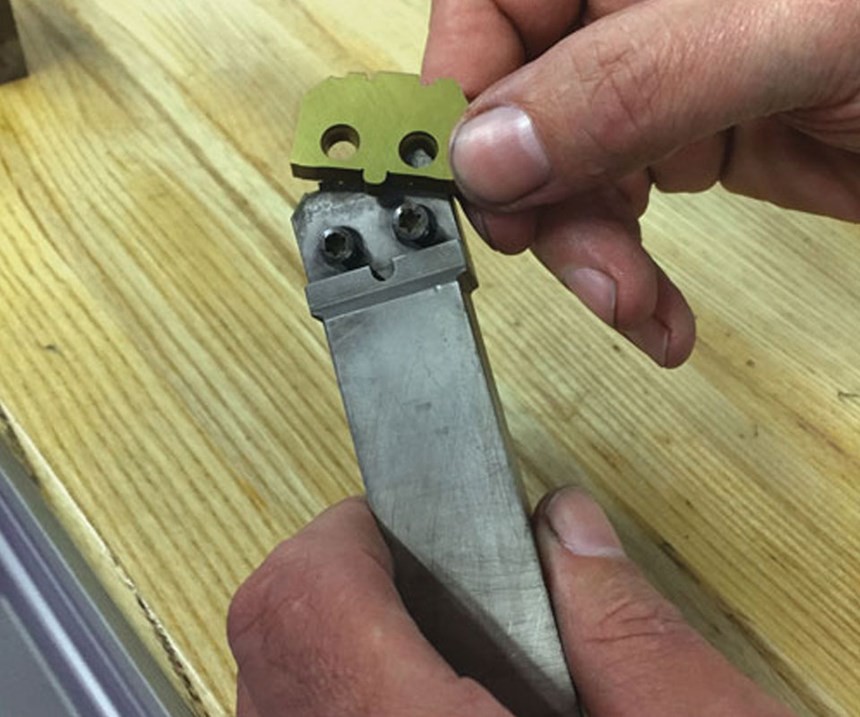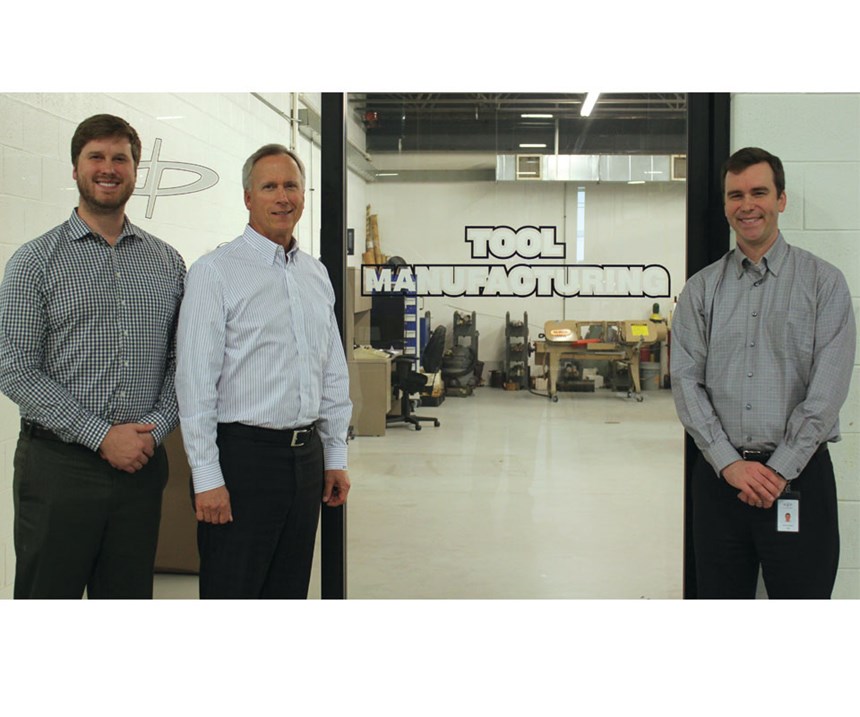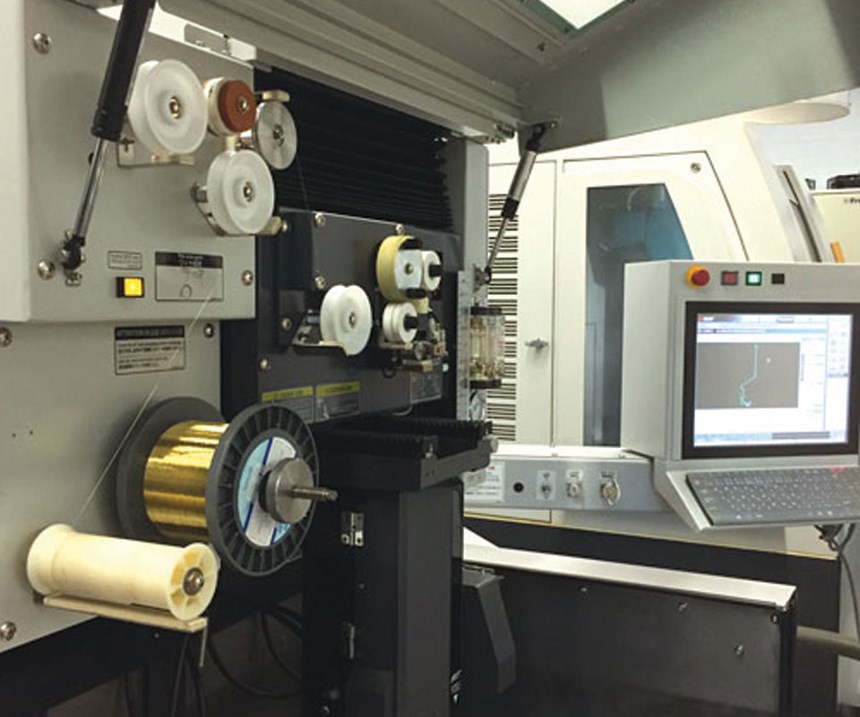EDM Enables DIY Form Tools
This manufacturer uses its EDM unit to make and sharpen form tools for its production equipment. Strategically, learning new skills in-house may lead to future commercialization of a value-added process not previously available. It could be a model for other shops.
EDM isn’t a topic PM normally covers in a feature article. However, for the past several years, we have selected topics that historically are “off topic” for the precision machined products market we serve. We do this because many plants have seen shrinkage in the number of traditional customers. It’s not “your father’s or grandfather’s” precision machining industry anymore. To compensate, it has become necessary to do more for existing customers, which can lead to a shakeup on the plant floor regarding its operational capability. The core capabilities built around precision turning remain in place, but they are increasingly being augmented by nontraditional operations.
Therefore, as manufacturers’ business models change, so must our editorial content. This article reports on DuPage Machine Products, a precision turned parts manufacturer that uses its ingenuity to solve a problem by using EDM, an untraditional precision machining process. DuPage intelligently uses its own resources and equipment to create replacement tools for its machines, decreasing downtime and allowing the company to stay on track with deliveries.
Finding a Manufacturer
We hoped to find a precision machining facility that is using EDM for this story, so we called a long-time contact, Pat Simon, marketing manager at Mitsubishi EDM, a division of MC Machinery Systems in the Chicago area to ask for an idea for a contact. DuPage Machine Products in Bloomingdale (Chicago), Illinois, was the first name he suggested.
It turns out that we go way back with DuPage President Dave Knuepfer and his son, Dave Jr., through their activities with the PMPA and several stories we collaborated on through the years featuring the company.
This precision turned parts manufacturer has succeeded by embracing and applying new technology rather than cursing it.
Like many precision turned parts manufacturers, DuPage started life primarily as a multi-spindle house using cam-actuated machine tools. DuPage Machine Products was a spin-off of the New Britain department of General Engineering Works, founded in 1922 by Dave Jr.’s great grandfather. These New Britain machines became DuPage’s foundational technology. For many years, the available work sustained the company successfully.
As Dave and Bill Knuepfer now lead the company in its fourth generation, with time and technology moving forward, so has DuPage Machine Products. The next development was to shift from the New Britains and install newer technology in the form of six- and eight-spindle Euroturn machines, that were being marketed through Maxim (Gosiger) at that time.
Initially, these Euroturns were cam-actuated, like the New Britains. However, as CNC servo-controlled compound slides became available for selected stations, usually on station six, DuPage was quick to retrofit a number of the Euroturns to incorporate added drilling and single-point precision turning, resulting in tolerance improvements. Technological improvement has become a theme for this company.
DuPage’s stable of multi-spindles continued to expand. Index CNC machines were added to complement the Euroturns with the CNC slides.
In the early 1990s, DuPage entered into the hydraulics industry. This required different machining capabilities that traditional multi-spindles could not always provide. “This move into the hydraulics market required us to look at more sophisticated secondary operation equipment such as centerless grinding for heat treated parts, as well as honing and bore sizing machines,” Dave Jr. says. “We needed to make DuPage capable of being a one-stop shop for our customers’ discreet hydraulic parts. That evolved further by adding an assembly department to provide press-fit assemblies and one piece actuators with leak testing and more. The assemblies are shipped line-ready for its customers.”
DuPage’s shop floor is still multi-spindle focused, however lines of multi CNC Index and ZPS/Euroturns with servo slides have now replaced the traditional cam machines with some secondary operation machines interspersed on the plant floor. It’s busy and crowded, yet represents how this precision turned parts manufacturer continues to evolve beyond its original metalworking capability, like so many manufacturers, in varying degrees, throughout our industry.
Why EDM?
As DuPage’s secondary machines do their thing, the multi-spindle machines continue to crank high volumes of parts, and in doing so, continue to burn through tooling of various types from single point to form tools.
“An issue we had was that we were buying all of our cutting tools from an outside source,” Dave Jr. says. “This was fine, but, as the plant and machine tool inventory grew, the demands on our suppliers grew as well. A tool would break, causing a machine to go down, and the time involved to get a replacement was becoming an issue. We were always under a time constraint.”
To solve the problem, many years ago Dave Sr. decided to set up an in-house toolroom to produce replacement tools for multi-spindle and other machine tools. The idea was for the plant to service itself—eliminate the middleman—allowing better throughput and better control over deliveries.
The beginning of the toolroom was pretty basic. Bridgeport-type mills, surface grinders and manual lathes to start. In 1995, DuPage bought its first wire EDM and used it to cut form tools. However, as the complexity and volume of work increased internally, the need for a higher performance machine gave them the opportunity to look at the Mitsubishi EDM technology. Now, the company uses the model MD+Pro III, which has a 15-inch touchscreen and a non-contact cylindrical drive system.
Compared with the first EDM unit, this one is technologically similar to comparing hand wheels with servomotors. With its new machine, DuPage is able to cut complex form tools from carbide and tool steel blanks, make shave tools for dove toolholders and precisely section parts in half for inspection. The machine can run either tended or unattended.
DuPage designs its own tools in its engineering department, which are sent to the EDM machine’s CNC as an imported DXF file. Another method used is to manually input the program using coordinate programming. The toolroom uses both, choosing which one based on the complexity of the tool.
Looking Ahead
The ability to produce its own tools raises the question, “Can DuPage use the native skills developed in the toolroom to add EDM to its arsenal of value-added services for its customers?
Dave Sr. thinks it can. “I can see us doing that. At present, we are very busy in the toolroom, just keeping up with our own internal needs. However, I can see that as a plan in the future.”
He says, “In fact, the idea of wading into a newer technology by developing the skills needed internally first is a good way, with lower risk, to implement most of the new technologies on the plant floor and offer it commercially.”
Sidebar:
Speed is Relative
Wire EDM is a relatively slow process if one is only looking at the rate at which the cutter (wire) is moving through the workpiece. Speeds and feeds for sawing, milling, turning and grinding are normally much faster, but the hardness of the material being machined must be taken into consideration.
Using spark erosion verses mechanical chip removal allows wire EDM to cut through any material as long as it conducts electricity. From soft as aluminum to as hard as PCD (polycrystalline diamond), virtually any material can be cut.
Also, the finished part is truly finished—no secondary deburring operation is required when using a wire EDM process. Even if a tool maker is grinding die inserts, it is still necessary to take a hard, fine stone and break the grinding burr of the edge that has been machined.
Wire EDM, through a multiple pass machining process (DuPage typically uses four passes, one roughing and three skim cuts) to produce a very fine matte finish that in many cases is far superior, when it comes to performance, to a milled or ground finish. The soft matte finish of EDM, which looks like the satin chrome of a 6-inch scale, holds more lubricant at the cutting edge of a tool such as a punch and die block or lathe/screw machine type tooling, thus helping it run cooler and last longer.
Wire EDM doesn’t care how hard the workpiece is as long as it’s conductive. This allows the workpiece, such as a punch and die block or dovetail tool for a screw machine, to be fully heat treated before the shape is cut.
The traditional way to make these parts is to machine the steel in a soft state, leaving the finishing stock. Then they are sent to heat treat, which normally warps, twists and changes the size of the part. Last, the parts are finish-ground to size. Wire EDM only needs a start hole to thread the wire through or to start from an outside edge, and the hardened tool steel or carbide can be cut and finished with no secondary operations.
The final point about speed with wire EDM is unattended operation. Though the feed rate through the workpiece may be slow, the machines are CNC and will run by themselves.Normally, the size of the roll of wire put on the machine dictates the amount of time it will run by itself. Automatic self-threading, should the wire break, allows for continuous unattended operation until the wire spool is exhausted.
Unattended time is easy, as no operator is being paid to stand in front of the machine. In many manufacturing facilities, one operator runs several machines with no problem. This in itself is a huge advantage wire EDM can bring to a plant that runs the machines 24/7 when the work is there.
In the end, there are many points to consider other than only the removal rate or forward cutting speed when it comes to fully understanding the real speed advantage to wire EDM.
Read Next
Do You Have Single Points of Failure?
Plans need to be in place before a catastrophic event occurs.
Read MoreEmerging Leaders Nominations Now Open
Here’s your chance to highlight a young person in your manufacturing business who is on the path to be a future leader moving your company forward.
Read MoreA Tooling Workshop Worth a Visit
Marubeni Citizen-Cincom’s tooling and accessory workshop offers a chance to learn more about ancillary devices that can boost machining efficiency and capability.
Read More






















